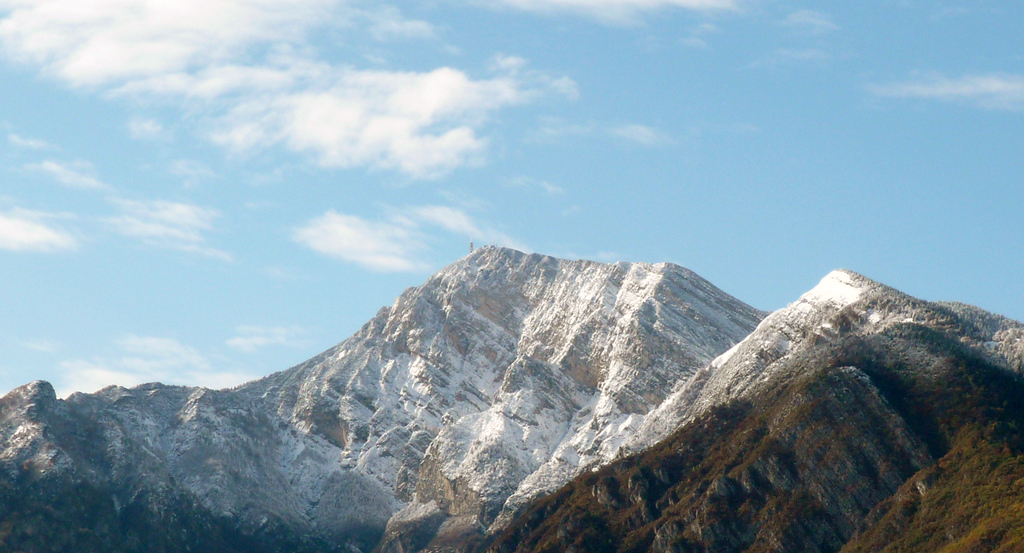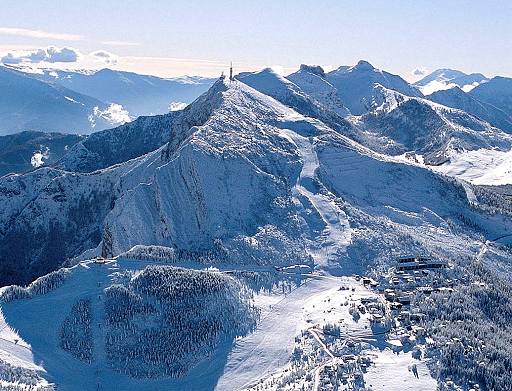
Tre Cime del Monte Bondone Integral Nature Reserve
This post is also available in:
 Italiano (Italian)
Italiano (Italian)
Mount Bondone (Bondberg), a sunny mountain immediately west of Trento, in the heart of the Adige Valley, offers spectacular views encompassing the Brenta Dolomites, the Adamello Presanella, the plains towards Lake Garda, and Valle dei Laghi. At altitudes ranging from 5.183 ft (Viote plateau) to 7.139 ft (Mount Cornetto), the Tre Cime del Monte Bondone integral nature reserve stretches along some 457 acres. Established in 1968, it includes the four peaks around it: Mount Palon (6.856 ft), Mount Cornetto (7.139 ft), Doss d’Abramo (7.020 ft), and Cima Verde (6.896 ft), whose geological composition is almost exclusively made of sedimentary rocks (dolomites, dolomite limestone and marlstone, dating back to the Mesozoic and Tertiary eras).
Within the Reserve, there’s a great variety and of flora and fauna – the Viote plain is, in fact, an interesting area for the alpine bog and its botanical endemisms. There is also a botanical garden, “Le Viote di Monte Bondone Alpine Botanical Garden”, managed by the Tridentino Museum of Natural Sciences, which hosts alpine plants and flowers from around the world.
On its southern side, there is the Centre of Alpine Ecology, a place much appreciated by scholars and mountain lovers.
FLORA and FAUNA
The vegetation of Mount Bondone features beech woods (Fagus spp.), Norway spruces (Picea abies), and larches (Larix decidua), as well as abandoned grasslands; in the higher areas, there are the typical pre-alpine shrub formations (alders, mountain pine forests, etc.), and forests (coniferous groves of larches and spruces); at higher altitudes, there’s the alpine belt vegetation, with huge meadows of Sesleria albicans.
The most intriguing feature of the vegetation is undoubtedly its herbaceous flora: there are endemisms such as Paederota bonarota, Geranium argenteum, Physoplexis comosa, together with other important species such as Paeonia officinalis, anemone alpina, and anemone montana – not to mention many wild orchids and the typical flora of alpine bogs.
The highest part of the reserve is occasionally populated by roe deer, which, however, prefer the Viote Basin for its abundance of food. Chamois have been spotted among the rocks of the Tre Cime. Bird species include are capercaillies, black grouses, common ravens, alpine choughs, golden eagles.
The ALPINE BOTANICAL GARDEN OF THE VIOTE DI MONTE BONDONE
Within the reserve, there is also the “Viote di Monte Bondone Alpine Botanical Garden”, founded in 1938: one of the most important botanical gardens in the Alps (see related sheet).
THE PEAT BOG
Not far from the Botanical Garden, at 5.085 ft above sea level, the Viote peat bog (also called “Palù di Bondone”), covers some 50 acres. It is a typical example of a flat acid peat bog in the Alps, with a predominant presence of cyperaceae and graminacea , together with occasional herbaceous species, such as Primula farinosa, Drosera rotundifolia, and Menyanthes trifoliata.
The “Roggia del Monte Bondone” torrent originates from this very humid area. At the beginning of the XX century, the peat bog was cultivated: the extracted peat, used as fuel, was taken to Mattarello (some 4 miles from Trento) and to the Adige Valley by cable railway. This ancient exploitation, presumably stopped around 1915, left two large and deep trenches and a series of excavations clearly visible on the surface of the peat bog.
CURIOSITIES:
Above the “Montesel sul Bondone” cable car terminal, there is a private weather station; on the nearby ski slopes, the first European ski lift was built in 1934 – it also served as a sledge lift.
Along the slopes of the mountain, there used to be a training facility for the Border Guards and the Alpine Troops. This area has been recently recovered and a spherical observatory as replaced the original military firing range.
This post is also available in:
 Italiano (Italian)
Italiano (Italian)



